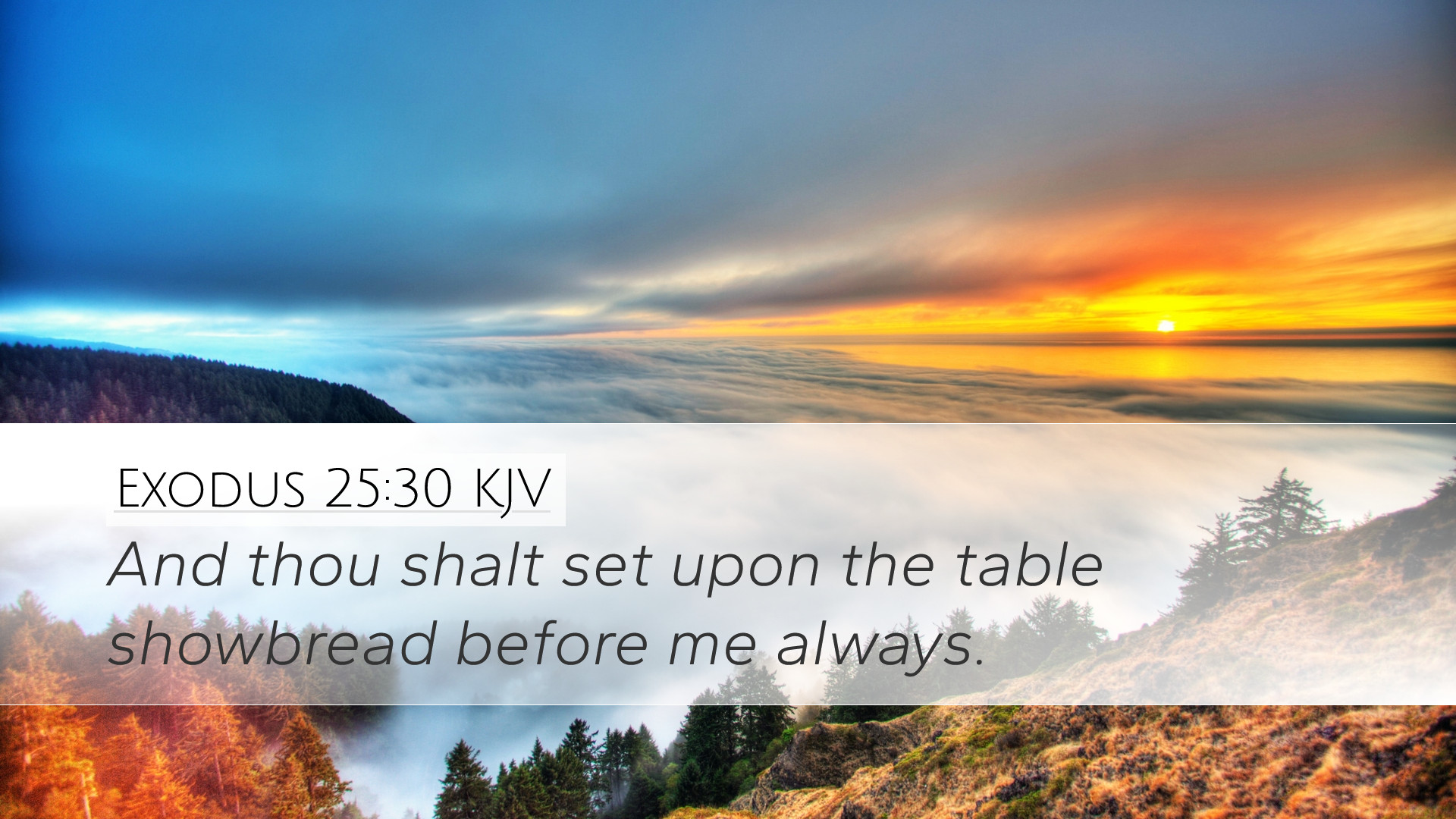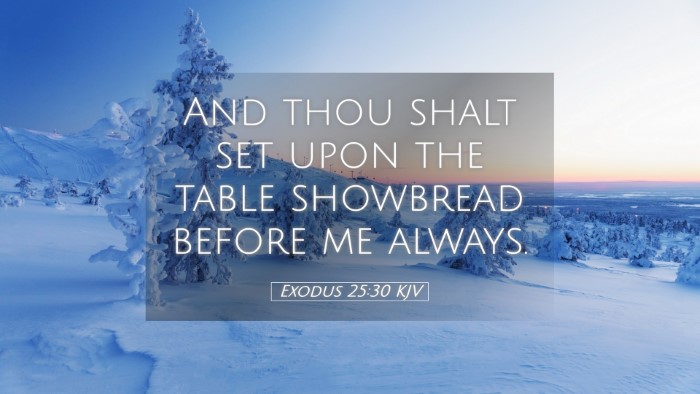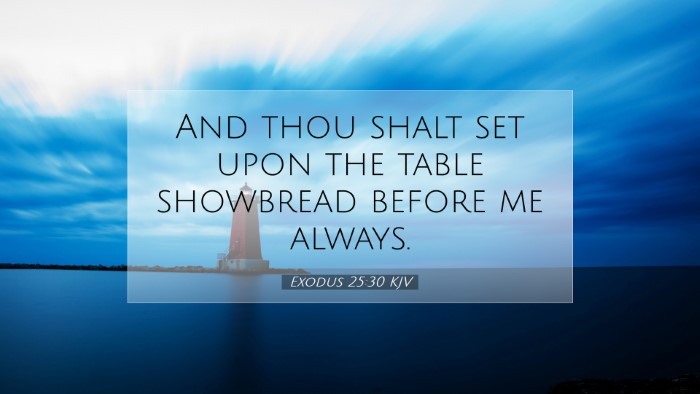Commentary on Exodus 25:30
Verse: "And thou shalt set upon the table shewbread before me always." (Exodus 25:30)
Introduction
The verse Exodus 25:30 is situated within the broader context of God's instructions to Moses regarding the construction of the Tabernacle and its sacred furnishings. This command pertains specifically to the Table of Shewbread, which holds both theological and practical significance in Israelite worship.
The Tabernacle and Its Symbolism
The Tabernacle represents God's dwelling among His people. It is a place of worship and a symbol of God's presence. The Table of Shewbread was crafted according to God's specifications, which signify the importance of obedience to divine instruction.
The Table of Shewbread
Design and Purpose
- The Table was made of acacia wood and overlaid with pure gold, indicating both durability and sanctity.
- It was to be placed in the Holy Place of the Tabernacle, directly outside the Holy of Holies, symbolizing God's provision and the communion between God and humanity.
Symbolism of the Shewbread
According to Matthew Henry, the shewbread, also known as the "bread of the Presence," signifies God's sustenance and His covenant relationship with Israel. It represents communion, indicating that God nourishes His people spiritually and physically.
Theological Significance
The emphasis on "always" suggests the perpetual nature of God's provision and presence. Adam Clarke notes that this continuous placement invites the priestly ministry to maintain a continual remembrance of God’s goodness and faithfulness to His people. It emphasizes the unceasing need for divine grace in the life of the believer.
Reflection for Pastors and Theologians
This verse can serve as a profound reminder for pastors and theologians regarding the importance of maintaining a sacred space within their ministries that reflects God’s ongoing provision and presence. The shewbread can be seen as a call to ensure that the nourishment offered to congregations is perpetual and reliant upon God's Word.
- Spiritual Nourishment: Just as the shewbread was always before God, the teaching and preaching of the Word should be constant and vital in the life of the church.
- Faithfulness in Worship: The regular presentation of the shewbread signifies the need for faithful worship practices that invite the presence of God.
- Community and Covenant: The Table reflects the community that worships together, reinforcing the idea of covenant relationship among God's people.
Application for Students and Scholars
Students and scholars studying this passage are invited to delve deeper into its implications. The needs for ongoing theological reflection on the nature of worship, God's provision, and the means of grace can be abundant.
- The Role of Tradition: Scholars can explore the historical context and significance of the shewbread in ancient Israelite worship.
- Intertestamental Connections: Understanding the parallels in the New Testament, especially in the context of Jesus as the Bread of Life, enriches the depth of the study.
- Covenantal Themes: The theme of the covenant underlines the transcendent nature of God as He relates to humanity throughout Scripture.
Conclusion
Exodus 25:30 serves not only as a command concerning the Tabernacle but as a rich source of theological insight regarding God’s continuous presence and provision. Through the symbolism of the shewbread, we see that worship is not merely a ritual but a relational dynamic between God and His people. This commandment invites believers into deeper reflection on their covenant relationship with God through Christ, the ultimate Fulfillment of the Law and the Source of eternal sustenance.


